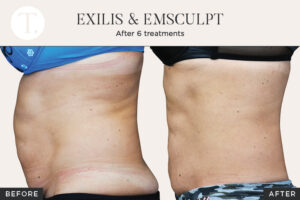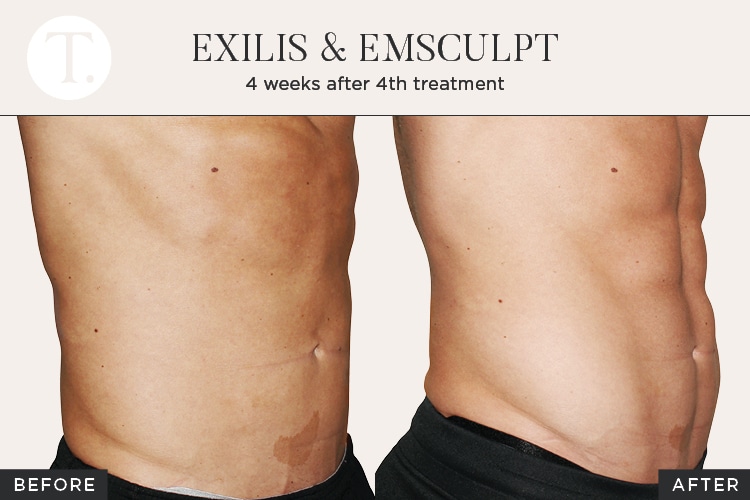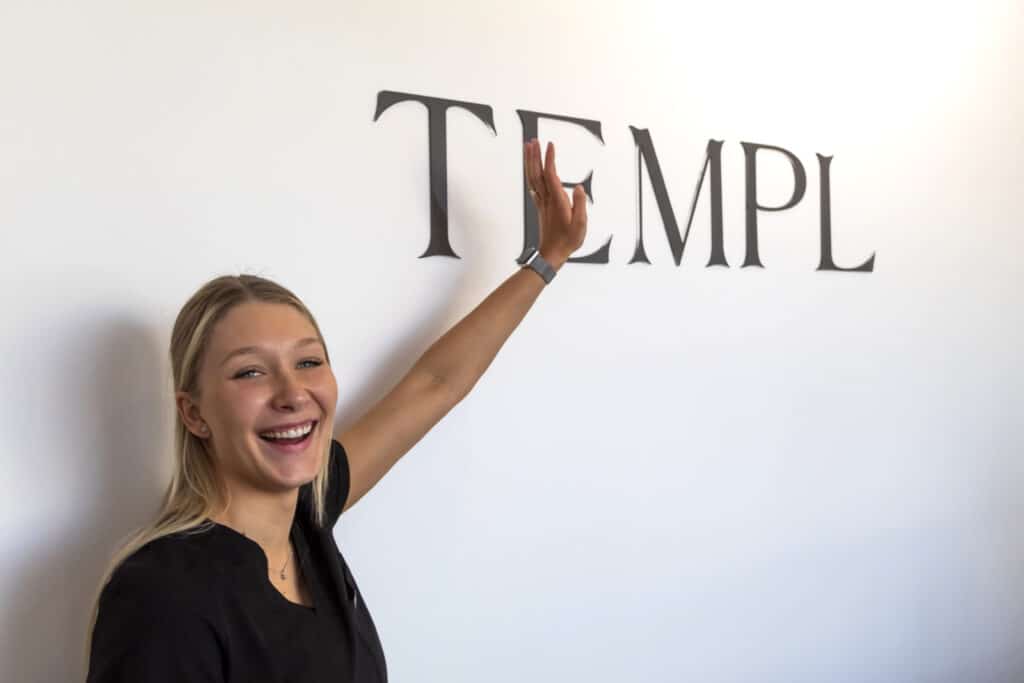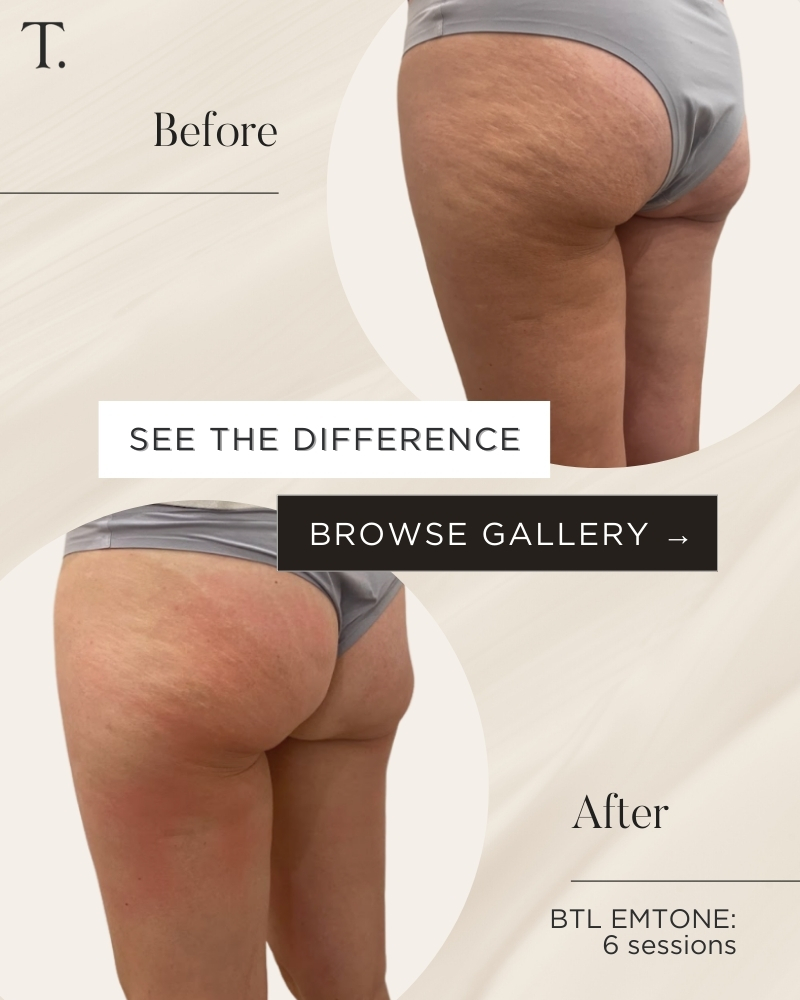Let me guess. You have been searching for fat reduction treatments and are being bombarded with different methods and machines. Most lead to the breakdown of fat cells through extreme temperatures, but what are the actual differences?
The basics of non-invasive procedures
In today’s blog, we will cover Radio Frequency (RF), Ultrasound, High Intensity Focused Ultrasound (HIFU), High-Intensity Electromagnetic Field (HIFEM), and Cryolipolysis (Cryo) methods, for non-invasive fat reduction. All methods reduce fat and have some similarities:
- All approaches target subcutaneous fat reduction, where the fat cells are eliminated and eventually excreted as waste.
- All approaches are non-invasive and require little to no downtime.
- All are less risky and cheaper than liposuction but yield less dramatic results.
- All approaches, invasive and non-invasive, work best for shaking those stubborn pockets of fat and should be combined with a healthy diet and exercise for the best result.
Psst. Disclaimer alert! At TEMPL, we offer fat reduction via Exilis (RF / Ultrasound) and Emsculpt (HIFEM) technologies which are medical grade, FDA and TGA cleared. We chose our technology for its award-winning track record and strong results backed by science.
DID YOU KNOW?
Only one in ten patients will pursue a surgical procedure after considering all the treatment options. Many more patients are interested in and will follow through with less risky and less painful non-invasive alternatives.
Liposuction
The most famous fat reduction procedure of them all! Lipo can eliminate fat deposits in targeted zones in a single session. These procedures are performed by plastic and cosmetic surgeons, who make incisions, go in and suck the fat out! For those with a strong stomach, here is the procedure being performed.
The results are more dramatic than non-invasive procedures, with about three to four liters of fat being the upper range of what can be removed in a single session (in general the more you remove the longer the downtime). Any more than that, and it is recommended to space your treatments out to reduce the risk of complications.
Such dramatic results do come with added drawbacks of bruising and swelling, infection and some scarring, the incisions also need to be carefully managed for at least 10 days. It also comes at a higher cost as you pay for the surgeon’s and anesthetists’ fees in addition to the hospital and theatre costs. Costs estimates range from $3,000 for a single treatment area up to $15,000 for multiple areas.
Radio Frequency (REF), Ultrasound & High-Intensity Focused Ultrasound (HIFU)
Radio frequency methods heat the fat layer causing apoptosis or cell death. Once a fat cell is dead, it is gone. The fat cells are then cleared naturally through lymphatic channels leading to significant volume loss and cell death over a number of weeks. One study in 2016 found RF therapy was shown to reduce mean fat reduction of 40% three months after the final treatment.
HIFU uses high-frequency ultrasound energy to target the layers of skin just below the surface, causing it to heat and resulting in cellular damage that stimulates the production of more collagen. This leads to cells overheating and dying, via a process called “thermal necrosis”. HIFU significantly improves skin elasticity after 12 weeks. It is also a great treatment for non-surgical facelifts and general skin tightening on the thighs, arms, and neck.
A popular RF/Ultrasound fat reduction device is the BTL Exilis which uses a handheld device that glides over the skin and feels like a hot stone massage. It is the first and only device to simultaneously combine radio frequency and ultrasound to tighten skin and address body concerns. Exilis heats the fat to around 43 degrees, leading to the death of cells.
The handheld device allows for a customised solution as it can focus on specific areas of stubborn fat and requires no downtime and no needles. One drawback is that patients with implantable devices near the treatment area, such as a steel screw, can’t use this device as it disrupts the machine’s energy.

High Intensity Focused Electromagnetic Field (HIFEM)
HIFEM is the new kid on the block and achieves strong results in both body fat reduction and increasing muscle mass – it’s a fantastic solution for body contouring and is used widely in Hollywood by Kim Kardashian, Jennifer Lopez, and Hailey Bieber. In one particular study completed in 2021, patient satisfaction was 100% after 8 weeks and showed a meaningful reduction in fat and abdominal circumference.
HIFEM differs from other non-invasive methods because it does not use extreme temperatures to break down fat. Instead, it uses intense muscle contractions to cause apoptosis (natural cell death) where your body then metabolises the fat and eventually leaves your body as waste.
Several studies report fat reduction in the range of 16% to 23% and muscle mass increase of 15% to 26% two to three months post-treatment. Muscle thickening tends to be more prominent in patients with lower BMIs.
Like the RF/Ultrasoud technology, implanted metal devices near the treatment area are considered a contraindication for using Emsculpt. Don’t panic! You can still get fat reduction via fat freezing.
We love pairing Emsculpt and Exilis to burn fat (a tag team approach), boost collagen levels, and build muscle.
DID YOU KNOW?
Emsculpt sends powerful contractions to the treatment area. The contractions feel strange at first – like super intense vibrations that reach your very core.

Cryolipolysis (Fat Freezing)
Let’s start from the start. How was fat freezing discovered?
The story goes that researchers from Harvard began investigating popsicle panniculitis. It was found that children who ate a lot of popsicles (aka icy poles!) developed dimples indicative of targeted fat loss in the inner cheek due to exposure to extreme cold. This discovery led to the conclusion that fat freezes at a higher temperature than skin, so fat freezing was born.
Fat freezing targets fat bulges typically along the back, buttocks, and abdomen like other procedures. The deep freezing of fat cells causes them to die and be naturally expelled via your lymphatic system.
A popular brand is Coolsculpting which uses vacuum-like suction applicators on the treatment area. The targeted areas tend to initially feel very cold and tingling as the fat is cooled to around +5 and -11 degrees Celsius, and this discomfort subsides as the area becomes numb.
Treatments run for around 45 minutes, with results taking up to 3 months to be fully visible. Coolsculpting reports on their website that a complete treatment cycle can result in 20 to 25% reduction of stubborn fat. Side effects from this treatment include bruising, swelling, numbness, some ongoing nerve sensitivity and a rare side effect called paradoxical hyperplasia.
Customers often talk about the worst part being the massage after the applicators are removed. The massage, which consists of a kneading motion helps break down fat cells and reduce swelling and bruising that can be caused by Coolsculpting. Given your fat cells are entirely frozen after the treatment Glamour Magazine described the massage as intense discomfort.
DID YOU KNOW?
Fat Freezing was discovered after children who frequently consumed icy poles had reduced fat in their cheeks. This led researchers to find the nexus between extreme cold and the breakdown of fat cells.
What is right for you
With the wave of technological advancement, non-invasive procedures have been gaining in popularity. All methods, both invasive and non-invasive, have their strengths and weakness it is important to decide what you are comfortable with.
Whatever you decide, be sure to ask if the equipment is medically graded for its intended use and is both FDA and TGA approved – don’t be fooled by advertising and/or copycats!
Curious to know more?
At TEMPL we offer complimentary consultations where our specially trained therapists discuss your body goals and how our range of solutions can help your journey to a happy, healthier life. Book your consultation online, on the phone or email.

Founder & Head Clinician



